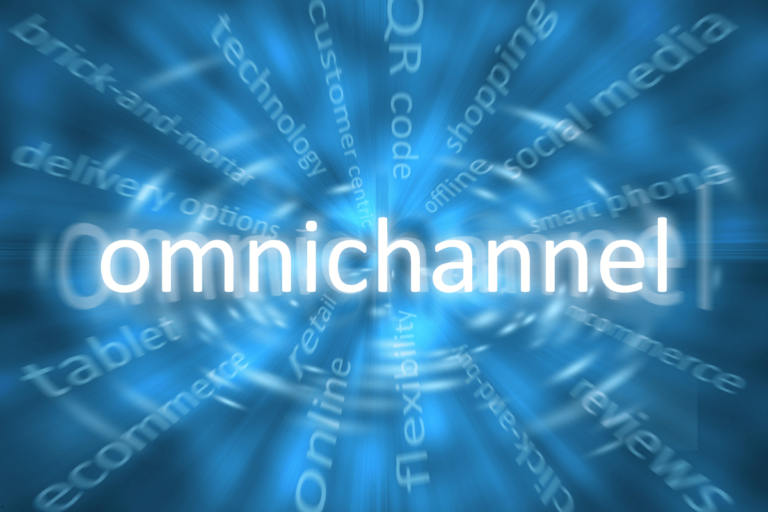Behavioral Psychology in Marketing: Driving success through understanding behavior.
Did you know emotionally connected customers are 52% more valuable to a brand than just being satisfied? This fact shows how big an impact Behavioral Psychology in Marketing can have. Companies now use neuromarketing and insights on buyer behavior to make their marketing better.
Brands like Apple and Starbucks use human psychology to make their marketing work. Apple uses scarcity to make people buy more. Starbucks uses loyalty programs to keep customers coming back. Behavioral psychology affects every choice we make, from what colors we see to what we think of a product.
Key Takeaways
- Emotionally connected customers are 52% more valuable to brands than highly satisfied ones.
- Neuromarketing principles use psychological insights to make marketing better.
- Scarcity and urgency are strong tools to get people to act fast.
- Knowing about cognitive biases helps make marketing that connects with people.
- Social proof, like good reviews, can increase the chance of buying a product by 270%.
Understanding Consumer Behavior
Exploring consumer behavior analysis shows us why people buy things. A big part of this is knowing that 76% of consumers want companies to understand their needs. This shows how important it is to use behavioral psychology in marketing.
By looking at consumer behavior through different psychological views, companies can better meet these needs. This helps them succeed.
The Role of Cognitive Biases
Cognitive biases in ads greatly affect what we buy. Things like loss aversion and anchoring change how we see products and make choices. Loss aversion makes people prefer avoiding losses over getting gains, keeping them with brands they know.
Anchoring also changes how we judge a product’s value by what we first see, like in pricing.
Impact of Social Influences
Social influences greatly shape what we choose to buy. The idea of social proof, where we follow others, is very strong. A Deloitte report says over 29% of consumers buy things because of social media.
Reviews and what others do influence our choices. In today’s digital world, knowing and using these social forces is key to good marketing.
Emotional Triggers in Decision-Making
Emotions play a big part in making sales decisions. Feelings like joy, fear, or nostalgia can push us towards or away from buying something. For example, ads that make us feel like we’ll miss out if we don’t buy now can make us act fast.
Using positive emotions through stories and making brands relatable can create strong connections with consumers. Knowing and using these emotional triggers lets marketers tell stories that really speak to their audience.
Leveraging Social Proof
In the world of marketing, using social proof can really help a brand look more credible and trustworthy. It’s important to know how things like testimonials and reviews work. They are key to making a brand seem more reliable.
Testimonials and Reviews
Testimonials can make people trust a brand a lot more, especially in tech decisions. When companies use these in their marketing, they tap into the power of social validation. This makes people less worried and builds trust.
Using real success stories in marketing also makes it more believable. It helps people see themselves having the same good results. This can really help get more people to buy what you’re selling.
Case studies and testimonials from well-known clients are very powerful. They can change the minds of many people in tech sales. This shows how important real, positive feedback can be.
Influencer Partnerships
Influencer marketing is a strong way to show social proof. When B2B tech companies get support from influencers, they reach more people and look better to the public. This strategy uses the influencer’s trust with their followers to boost the brand’s credibility.
Studies show that B2B tech companies growing on social media often see more customers. This is thanks to influencers. These partnerships spread the brand’s message further and connect with more people, making it seem more real.
Using content from real customers with influencer marketing makes it even stronger. It shows the brand cares about making customers happy. This mix of influencer and user content keeps customers coming back, showing how powerful social validation is in marketing today.
Utilizing the Scarcity Principle
The scarcity principle is a key tool in marketing. It uses the idea that people value things more when they think they’re rare. Using scarcity tactics can really boost how much people engage and buy. Research shows 88% of marketers think these tactics change how people act.
Creating a Sense of Urgency
Creating urgency is a main way to use the scarcity principle. Things like limited-time offers and flash deals make people want to buy now. 67% of businesses saw more sales by using these tactics. Saying “only a few items are left” or using countdown timers on pages can make people act fast.
- Limited supply can drive market prices higher due to increased demand.
- Limited-time offers boost consumer demand and engagement.
- Scarcity creates a sense of urgency, prompting customers to purchase before items run out.
Highlighting Limited Availability
Another way to use scarcity is by stressing that things are hard to get. This taps into the fear of missing out (FOMO), making people buy quickly. 42% of consumers have bought things on a whim because they thought they might not get them later. Brands like Supreme do this by releasing limited-edition items, making them seem exclusive and very wanted.
Also, 56% of marketing campaigns that focus on scarcity offer special access or membership. But, it’s important to be real, as 31% of people don’t trust brands that use scarcity too much. Being clear about how much is available helps build trust and a good reputation.
- Pre-order options can generate anticipation, provide customer insights, and improve forecasting.
- Clear communication with customers is essential when implementing scarcity strategies.
- Specific limits on product availability, like offering special bundles to the first set number of customers, can enhance customer trust.
Working with influencers to promote deals or special offers can get more people to see and engage with your campaign. Using tools like Mailchimp can help make these campaigns reach more people and get more sales.
Psychological Pricing Strategies
Using psychological pricing strategies can really change how customers act and help businesses do better. Brands can boost sales and make more money by understanding how people see prices. We’ll look at two key methods: using .99 pricing and anchoring and decoy pricing.
Price Perception through .99 Pricing
Setting a product at $9.99 instead of $10 can make more customers buy it. This is called charm pricing. It works because people see prices just below a whole number as much cheaper. Studies show charm pricing can raise sales by 17%.
Research at MIT and the University of Chicago found that prices ending in 9 can make customers want products more. This is because of the left-digit effect. People are more likely to buy at $1.99 than $2.00 because of the first digit.
Anchoring and Decoy Pricing
Anchoring pricing is a strong strategy. It sets a reference point for customers to judge prices by. For example, showing a high-priced item first makes a cheaper item seem more reasonable. Studies say 72% of businesses using anchored pricing saw a big jump in sales of cheaper items.
Decoy pricing also guides customers to choose a certain option. Dan Ariely’s study showed how a less appealing choice can lead customers to pick a more profitable one. Companies using decoy pricing saw a 30% increase in selling higher-priced items in the hospitality industry.
In short, anchoring and decoy pricing change how people see prices and what they choose to buy. They make customers pick the options brands want them to.
Behavioral Psychology in Marketing
Behavioral psychology is key in marketing. It helps make behavior modification in advertising work. By understanding consumer psychology, marketers can make strategies that really speak to their audience. This approach makes customers happier, more loyal, and more engaged with the brand over time.
Studies show that using marketing engagement tactics based on behavioral psychology changes how customers interact. For example, a study at a consumer-services firm found that better customer service came from behavioral psychology, not just changes in operations. This shows that focusing on the psychological side of customer service can really pay off.
Disney parks make waiting in line fun by adding enjoyable experiences. This smart use of consumer psychology makes the wait feel better. Online stores also boost satisfaction by letting customers control things like choosing seats or moving through the site.
Researchers Richard Chase and Sriram Dasu found three key things that affect how customers feel during their journey. These findings highlight the importance of using behavioral strategies in marketing engagement tactics to make customers happier.
Behavioral psychology isn’t just for dealing with customers directly. Airlines that improve the passenger experience by offering services like booking cars early or helping with bags show how behavior modification in advertising works well.
The best customer experience experts aim to change individual moments and whole customer journeys. By using behavioral psychology, companies can keep making customers happier and build a reputation that puts customers first.
In advertising, using behavioral psychology can really change the game. Research by Robert Cialdini showed that small actions, like giving out mints, can increase tips by a lot. This shows how small changes can have big effects.
Using behavioral psychology in marketing needs a careful touch. By tapping into these insights, brands can engage customers better and build stronger loyalty. This leads to lasting success in the market.
Emotional Appeals in Marketing
Emotional appeals in marketing are key to building strong bonds with customers. They tap into our natural tendency to make choices based on feelings. This idea is backed by Nobel winner Daniel Kahneman’s work on prospect theory. Using these methods can boost customer loyalty by up to 305% and improve how people see a brand by 35%.
Telling Compelling Stories
Storytelling in marketing is a strong way to connect with people on an emotional level. Brands like Apple and Nike have used this well. Apple’s “Think Different” and Nike’s “Just Do It” slogans touched millions by sparking creativity and motivation. Research shows that mixing emotion with logic can increase trust by 25%.
Stories that touch our hearts can also lead to a 30% higher response rate than those without data.
Using Visual and Sensory Marketing
Visual and sensory marketing are big parts of emotional branding. Sensory ads can make a big impact, making them stick in our minds. Music, for example, can greatly improve brand recall in ads. Personalized ads also boost emotional connection with viewers.
Coca-Cola’s “Share a Coke” and Budweiser’s “The Buddy Cup” ads used visuals and stories to bring out feelings of friendship and loyalty. This method can increase customer interaction by 15% with a clear call to action.
Consumer Segmentation and Targeting
Understanding your customers is key to successful marketing. Using market segmentation strategies helps businesses offer personalized experiences. By looking at demographics, psychographics, and behavior, companies can make their marketing hit the mark.
Demographic and Psychographic Segmentation
Demographic segmentation looks at things like age, gender, and income. It helps marketers make ads that speak to certain groups. But, it relies on data from others.
Psychographic segmentation goes deeper, focusing on things like personality and interests. It helps businesses understand what drives customers. This way, they can send messages that really connect.
Behavioral Segmentation
Behavioral segmentation uses data on what customers do and buy. It helps businesses see what matters to customers. This way, they can make offers that really count.
There are five main ways to segment by behavior:
- Purchase Segmentation
- Usage Segmentation
- Occasion and Timing-Based Segmentation
- Benefit Segmentation
- Loyalty-Based Segmentation
Big names like Amazon and Netflix use behavioral segmentation for better recommendations. This boosts engagement and sales. It lets companies make marketing that really speaks to each customer, improving satisfaction.
Enhancing User Experience with Behavioral Cues
Understanding and using behavioral marketing cues is key for making things better for users. These cues help guide people through digital and real spaces with visual and verbal hints.
In online shopping, knowing about decision fatigue has made things easier by offering great product choices. This has greatly improved user happiness and the number of sales. Making things more personal with visual marketing prompts makes the experience more fun and keeps users coming back.
Using things like user reviews and testimonials has shown to build trust and get people more involved. This makes it easier for users to decide, which is good for a great user experience.
For adding behavioral science to UX design, it’s good to use colors and contrast, stick to familiar layouts, and show progress. These steps help make choices simpler and improve how users interact.
- Decreasing decision fatigue through streamlined processes
- Guiding design choices with A/B testing and analytics
- Utilizing microinteractions to impact user emotions positively
- Personalizing user experiences to boost engagement and loyalty
Conclusion
As we wrap up our look into behavioral psychology in marketing, it’s clear that knowing how consumers behave is key. We’ve seen how using psychological insights can greatly improve marketing. This makes marketing strategies much more effective.
Neuromarketing looks closely at how people think and feel about different things. This helps marketers make ads that really speak to people. By understanding things like cognitive biases and emotional triggers, marketers can make campaigns that work better.
Using things like social proof and special offers can also help a lot. For example, making things feel more personal can increase sales by 10-15%. Social proof can even make customers more engaged by 20-30%. These facts show how important it is to use psychology in marketing.
In the end, behavioral psychology changes the game in marketing. By really understanding what people want and believe, companies can make their messages hit the mark. This leads to stronger connections with customers, more engagement, and better results over time.
Source Links
- Leveraging Consumer Behavior Psychology in Marketing Strategies for Better Results
- The Psychology of Marketing: Understanding Consumer Behavior
- Shaping Consumer Behavior: The Impact of Behavioral Psychology on Marketing Strategies
- Understanding Consumer Behavior In Marketing
- Consumer Psychology and Behavior
- Small Business Guide to Consumer Behavior | Mailchimp
- Using Social Proof in Marketing and Sales
- Social Proof Marketing, how to Gain Trust and Credibility – CreatorDB
- Harnessing Social Proof | OM Performance Marketers
- What Is Scarcity Principle? | Applications & Impact on Consumer Behavior
- The Scarcity Principle: How to Create Urgency | Mailchimp
- Psychological Pricing: 7 Research-Backed Strategies That Convert
- Psychological Pricing: Definition, Examples, Pros & Cons | Priceva
- What is Psychological Pricing?
- Putting behavioral psychology to work to improve the customer experience
- Marketing Psychology: 10 Revealing Principles of Human Behavior
- Council Post: Why Your Marketing Strategy Should Appeal To Emotions, Not Logic
- The Power of Emotional Appeals in Marketing: Why People Make Decisions Based on Emotion
- The Power of Emotion: The Effectiveness of Emotional Appeals in Advertising
- Behavioral Segmentation: The Key to Understanding Customers
- The Psychology of Purchase: How Behavioral Segmentation Influences Buying Decisions – Invesp
- Using the power of behavioral science to elevate User Experience (UX) design – The Decision Lab
- Behavior Design: The Ultimate Future of UX
- Logos, Website, Graphic Design, Product Design, Naming & More | crowdspring
- The Intersection of Psychology and Marketing – MOGXP LLC





